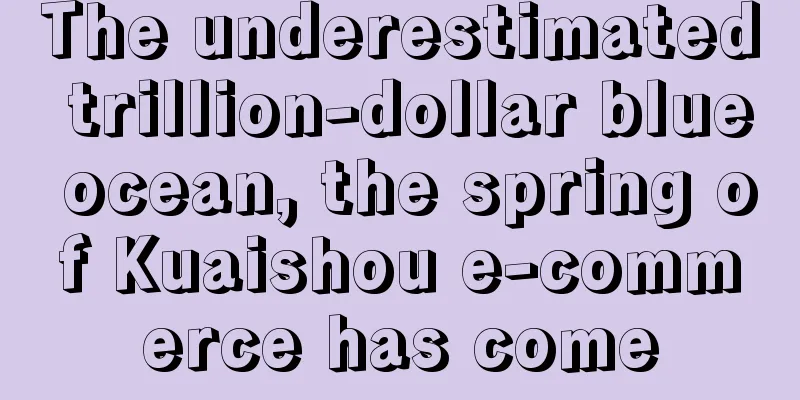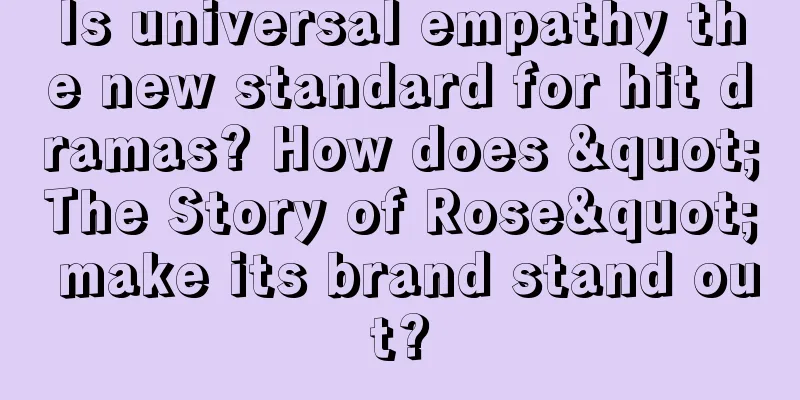Starbucks "joins hands" with Hilton to start a coffee value war?

In the Chinese coffee market where internal competition continues to intensify, Starbucks, which does not want to engage in a price war, wants to engage in a value war? 01 Starbucks “marries” with HiltonThe lively coffee market has reached the point where there is no more room for competition. Any movement of any brand now can attract the attention of the market. "Xinpinlue Finance" noticed that Starbucks China announced on June 20 that Starbucks Rewards Club would undergo a major upgrade and announced an upgrade to the rights and interests of the Starbucks membership system. One of them is worth noting. Starbucks has once again engaged in cross-border marketing, this time in cooperation with Hilton, a world-renowned hotel chain. Members of both Starbucks and Hilton can join each other's membership through their respective APPs and other channels and enjoy related special benefits. For example, after a member of one party registers and joins the other party's membership system, he or she can directly enjoy relevant benefits such as points, star accumulation, and accelerated membership upgrades. The cooperation between Starbucks and Hilton quickly attracted media coverage and market attention. The cooperation between the two companies is a win-win cooperation for both sides, as both sides value each other's membership value. Public data shows that as of March 31, 2024, the total number of Starbucks members in China will exceed 127 million, while the number of Hilton hotels worldwide will reach 2,476, and the number of members will exceed 180 million in 2023. At the same time, Starbucks also announced the addition of a diamond membership level for the first time, hoping to attract and retain Starbucks members through more personalized services. The Starbucks Rewards Club will also add new star redemption mechanisms and gameplay. In the view of Xinpinlue Finance, in the current extremely involutionary coffee market environment, Starbucks has been constantly making new moves in its membership service system, and its core goal is very clear: to expand core members, attract new members and retain old members. Starbucks is trying every way to create new highlights. In early June, Starbucks opened its first intangible cultural heritage concept store in Jiangsu, combining local intangible cultural heritage with coffee culture to defend its brand image and brand status. Nowadays, in the Chinese coffee market, Starbucks' leading brand image is multifaceted, and the outside world's views and opinions on Starbucks are always very different. In the extremely competitive and involutionary Chinese coffee market, does Starbucks still have a moat? Starbucks does not want to fight a price war, but a value war? 02 Starbucks in the tide of internal circulationIn the early years, Starbucks once dominated the Chinese coffee market, and some Korean coffee brands were also very popular among Chinese consumers. At that time, Starbucks relied on its brand image as an international coffee giant and the concept of "third space" to win the favor of many middle-class and white-collar consumers. To this day, Starbucks' brand positioning in the minds of senior fans is still unshakable. No one expected that with the rise of the Internet O2O trend, the rise of Chinese Internet coffee brands represented by Luckin Coffee has accelerated the popularization of coffee culture, and consumers naturally have more diverse choices. With the rise of Chinese local coffee brands, the original market rules and market logic of the Chinese coffee market have changed. In addition, domestic coffee brands are good at making hot products and engaging in cross-border marketing, and their market voice is getting higher and higher. The price war in the coffee market is still going on, especially the 9.9 coffee war launched by Luckin Coffee in 2023, which stirred up the coffee market. Kudi was even more ruthless and directly offered a low price of 8.8 yuan per cup. This coffee war had a great impact on the entire coffee market. It is in such a Chinese coffee market environment that Starbucks, as an early entrant and an old coffee giant, can hardly stay out of it. When it comes to Starbucks, many people will think of Starbucks’ “third space” concept first. Starbucks relies on this concept to attract fans. To this day, the “third space” concept still protects Starbucks. Recently, I believe many people have paid attention to a topic, that is, Starbucks has reduced its prices. The original price of Starbucks per cup was 30 to 40 yuan, but it is also quietly reducing its prices. According to China Business News, Starbucks has launched coupon activities, such as "10 yuan off for purchases over 60 yuan", "6 yuan off for purchases over 50 yuan", "3 cups for 49.9 yuan", "2 cups for 39.9 yuan", and "30% off coupon for coffee latte". On some local life group buying platforms, Starbucks has also launched discounts such as "5 large cups for 108 yuan" and "10 large cups for 249 yuan". Although Starbucks officially said that there has been no price cut, the actual price of a cup of Starbucks coffee has been reduced to around 20 yuan. When Xinpinlue Finance bought coffee at a Starbucks store in Shenzhen some time ago, the clerk promoted a discount card that allowed him to buy several cups at half the price, but he still couldn't resist the "temptation" and bought it. A senior person in the coffee industry told "Xinpinlue Finance" that in fact Starbucks has always had various coupons or discount coupons for its products. For example, it will mainly promote Frappuccino in the summer and launch corresponding activities at specific times. It is just that in the current context of fierce competition in the coffee market, Starbucks launched preferential activities, which were magnified by the market effect. In the eyes of many people, Starbucks, which has repeatedly stated that it will not participate in price wars, seems to be lowering its profile and continuously increasing its marketing methods through various marketing activities such as coupons. In the face of fierce market competition and coffee price wars, Starbucks is under great market pressure in this involution of the coffee market, and can only actively participate. 03 Does Starbucks still have a moat?There is a very interesting phenomenon. In China's automobile industry, many new car manufacturers say they can beat Tesla, while in China's coffee industry, many coffee brands say they want to surpass Starbucks. Last year, Luckin Coffee surpassed Starbucks in terms of store numbers and operating income. In the eyes of the outside world, Luckin Coffee has won the game. What’s more interesting is that after Luckin Coffee, Bawang Tea, a new tea brand established in 2017, also said it would surpass Starbucks. In May this year, Bawang Tea Princess shouted that the small goal for 2024 is to surpass Starbucks China in sales. Logically speaking, new tea drinks and coffee are two completely different tracks and there is not much comparability, but the market is happy to see such topical news. In the highly competitive market environment, Starbucks is facing increasing market pressure. There is a very interesting topic that is worth discussing: Does Starbucks, which has been compared and surpassed in various ways, still have a moat? A senior person in the coffee industry told Xinpinlue Finance that Starbucks has three core moats: brand value, "third space" and membership. Starbucks' first moat is brand value. Starbucks is positioned as a high-end brand, and its brand value is its first moat. Although Starbucks has different brand image perceptions in different countries, Starbucks has taken a high-end positioning route in the Chinese market, and its brand image has accumulated Starbucks' brand moat. Starbucks' second moat is the "third space". Starbucks introduced the concept of the "third space" into coffee shops, trying to make coffee shops the "third space" of consumers in addition to home and work. This concept is still the core competitiveness of Starbucks. The Economic Daily once published a commentary entitled "Looking for Selling Points in the "Third Space"" stating that Starbucks's profit path has never been just coffee. Starbucks' third moat is Starbucks membership. For a consumer brand, the importance of brand members, especially core members and loyal members, is self-evident. As mentioned above, by the end of the first quarter of this year, Starbucks China had more than 127 million members, of which 90-day active members exceeded 21 million. In the second quarter of Starbucks' fiscal year 2024, sales from members continued to grow, accounting for 75%. From this, we can understand why Starbucks focuses on member marketing and cooperates with Hilton in member marketing. Starbucks' senior fans are one of Starbucks' core consumer groups. Some market opinions believe that Starbucks' "third space" magic is failing in the Chinese market, and there have been many calls for directly comparing the prices of Starbucks products with those of competitors. From now on and in the future, Starbucks' moat still exists and can defend Starbucks' brand image and market value. 04 Is the value war starting in the coffee market? In the current Chinese coffee market, everything revolves around the word "volume", including volume branding, volume marketing, volume joint name, volume hot products, etc. It seems that some new changes have occurred in the market. Since entering 2024, the continuous reduction of Luckin Coffee's 9.9 coffee subsidies has attracted attention, and behind this is the big reversal of Luckin Coffee's performance. Luckin Coffee's first quarter financial report showed that the company's revenue in the first quarter was RMB 6.278 billion, a year-on-year increase of 41.5%; its net loss was RMB 83.2 million, a year-on-year change from profit to loss. Luckin Coffee fell into an embarrassing situation of increasing revenue but not profit, and the shrinking subsidies for the 9.9 coffee war attracted market attention. Some market opinions believed that the low price war of coffee was unsustainable. Zhu Danpeng, a Chinese food industry analyst, once told China Economic Weekly that "the essence of the coffee price war is to exchange price for volume, which is a common strategy for expanding the market in the early stages of establishment. This is also a direct manifestation of the involution of the entire industry. The product lines of some brands seem rich, but from the perspective of brand tone and matrix, they lack core competitiveness and their corporate profits are also small. Today's consumers not only pay attention to the price-performance ratio, but also the quality-price ratio. Therefore, price wars are difficult to sustain and are not a long-term solution for companies. "The price war has been the biggest highlight of the coffee market in recent years. No brand can stay out of it. From a longer-term development perspective, the Chinese coffee market cannot be without the value war. In the past one or two years, the price war in the new energy vehicle industry has become more and more fierce. Huawei's Yu Chengdong expressed the view that we should fight for value, not price. Yu Chengdong's views also apply to the coffee industry. In the view of "New Product Finance", from a longer-term perspective in the future, in addition to volume price, the Chinese coffee market cannot do without volume value. Competition in any industry is ultimately about volume value. Although the Chinese coffee market is currently highly competitive and price wars are still ongoing, from a long-term perspective, the coffee industry will accelerate into a value war. From a long-term perspective, what the domestic and foreign coffee brands, including Starbucks and Luckin Coffee, ultimately compete on is the company's sustainable profitability and brand value. The scale and volume of China's freshly ground coffee market are large enough and will continue to grow in the future. According to iResearch Consulting, China's freshly ground coffee market will reach 191.7 billion yuan in 2024. As early as 2022, the scale of Chinese coffee market consumers has reached 380 million people. This scale data will definitely continue to grow in the past one or two years. There is a clear consumer stratification in China's coffee market, with Starbucks's "third space", Luckin Coffee's new retail coffee shops, and various Internet celebrity coffee shops, and consumption is diversified. Each brand has its own brand tone, target customer group, main products, price range and brand influence. Differentiation will be a major theme of competition in the future coffee industry. "New Product Finance" believes that in the fiercely competitive Chinese coffee market, Starbucks' moat is still there, but the competitive pressure faced by Starbucks will only increase. Starbucks needs to continue to accelerate its exploration in brand positioning, localized marketing, new concept highlights, etc. |
<<: The most difficult 618 in history, who makes money by selling goods on B station
>>: E-commerce giants suffer from "traffic anxiety"
Recommend
Brand No. 1: 24 business rules
To build a brand, you also need to understand busi...
When will the Shopee refund be credited to your account? Answers to questions about Shopee refunds
The Shopee cross-border e-commerce platform is sti...
How brands can play with small categories
In recent years, with the continuous upgrading of ...
Marketing strategies under the trend of consumption upgrading: shifting from blindly believing in high-price positioning to enhancing value perception
As consumers’ consumption perspectives change, how...
What is Amazon's po number? What are Amazon's category codes?
Today I will introduce to you the content of openi...
Practical tips: Discounts, buy-one-get-one-free, pre-sales, group buying, this is enough for membership marketing!
The current Internet business model has spawned a ...
8 tips for making money with gadgets
This article helps you expand your money-making op...
What did successful solar term marketing do right in 2024?
From Kuaike's "Quickly Exceed 12 Grams&qu...
Tencent urgently needs to loosen up its video accounts
The supply-side cost is lower than that of Douyin,...
Flavored rice, high-priced drug scams, disfiguring injections... the list of 315 items exposed!
Recently, a group of companies were exposed by CCT...
How to submit an action plan to Amazon? What should I pay attention to?
Amazon is a well-known cross-border e-commerce pla...
How much does it cost to buy a Shopee online store? Is it expensive?
There are many businesses that want to open a stor...
Middle-aged and elderly women's clothing is becoming a hot topic in the e-commerce industry
It has been four years since the launch of WeChat ...
How did I save 30 million in advertising fees by creating a "hot topic" in 3 steps?
Brands have made chasing hot topics the mainstream...
What are the entry requirements and fees for Lazada? How to run a store?
Lazada was founded in 2012 and is headquartered in...









